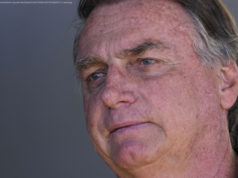We first brought attention to this firm in our special report “Selling Shovels in a Gold Rush: Buy This Sector to Profit From the Internet of Things.” In this report, we pointed out that this company broke the trend of…
We first brought attention to this firm in our special report “ Selling Shovels in a Gold Rush: Buy This Sector to Profit From the Internet of Things.” In this report, we pointed out that this company broke the trend of rising profits and ROIC, but still garnered a premium valuation to its peers. This disconnect, between fundamentals and valuation, coupled with a weak competitive position and misaligned executive incentives make PDF Solutions (PDFS: $16/share) this week’s Danger Zone pick.
Slight Revenue Growth While Profits Tank
Since 2013, PDFS’ revenue has grown 2% compounded annually. Over the same time, its after-tax profit ( NOPAT) has fallen 26% compounded annually to $9 million in 2016 and $3 million over the last twelve months (TTM), per Figure 1. The disconnect between revenue and profits comes from rapidly declining margins. The company’s NOPAT margin fell from 22% in 2013 to 3% TTM.
Figure 1: PDFS’ NOPAT & Revenue Since 2013
Sources: New Constructs, LLC and company filings
Declining margins and inefficient capital use have knocked PDFS’ return on invested capital ( ROIC) down from a once impressive 25% in 2013 to a bottom-quintile 3% TTM. Further, the company burned through $22 million (5% of market cap) in free cash flow in 2016. The firm’s -$26 million in FCF over the last twelve months equates to a -7% FCF yield, which is well below the 2% average of the stocks in the S&P 500.
The company’s $101 million in cash currently on the books would support the TTM cash burn rate for just under four years before the company would need a cash infusion via debt or dilutive share issuance.
Compensation Plan Means Execs Get Paid While Depleting Shareholder Value
PDF Solutions’ executive compensation plan fails to properly align executives’ interests with shareholders’ interests. The misalignment helps drives the profit decline shown in Figure 1 and allows executives to earn large bonuses while shareholder value is destroyed. Executives’ performance bonuses are tied to many different metrics, most of which fail to measure shareholder value creation. The metrics used include revenue growth, non-GAAP EBITDAR, and subjective measures such as leadership qualities, job scope, career with the company, and “long-term potential to enhance stockholder value.” The biggest red flag of these metrics is EBITDAR, which conveniently removes real operating expenses like stock-based compensation and restructuring charges.
Not surprisingly, as executives are focused on non-shareholder value-creating metrics, PDFS’ economic earnings have fallen from $15 million in 2013 to -$8 million TTM.
We’ve demonstrated through numerous case studies that ROIC, not revenue, leadership qualities, or non-GAAP metrics, is the primary driver of shareholder value creation. A recent white paper published by Ernst & Young also validates the importance of ROIC (see here: Getting ROIC Right) and the superiority of our data analytics. Without major changes to this compensation plan (e.g. emphasizing ROIC), investors should expect further value destruction.
Non-GAAP Metrics Understate Profitability Decline
PDF Solutions is among a long list of firms that use non-GAAP metrics, such as EBITDA and non-GAAP net income, to mask the severity of declining profits. Our research digs deeper so our clients see through the illusory numbers. Below are some of the items PDF Solutions removes to calculate its non-GAAP net income:
These adjustments have a large impact on the disparity between GAAP net income, non-GAAP net income, and economic earnings. While PDFS’ non-GAAP metrics are unable to hide declining profit, they make it appear less drastic over the past few years. Over the TTM period and 2016, PDFS removed $12 million (over 279% of TTM GAAP net income) and $11 million (over 120% of 2016 GAAP net income), respectively, in stock-based compensation expense to calculate non-GAAP net income. Combined with other adjustments, PDFS reported TTM non-GAAP net income of $14.4 million. Per Figure 2, GAAP net income was $4 million and economic earnings were -$8 million TTM.
Figure 2: PDFS’ Misleading Non-GAAP Metrics
Sources: New Constructs, LLC and company filings
Lagging Margins are Worrisome in A Highly Profitable Industry
PDF Solutions’ business covers a range of products and services aimed at enhancing yield and optimizing the design of integrated circuits. The larger industry of semiconductor equipment firms is characterized by rapid technological innovation and helps build the processors that power the growing list of connected devices. As with many technological industries, the semiconductor equipment market is filled with competition, ranging from large firms ASML Holdings (ASML), Applied Materials (AMAT), KLA – Tencor (KLAC) to smaller firms such as Kulicke & Soffa (KLIC), Orbotech (ORBK), and Rudolph Technologies (RTEC).
Over the past five years, this industry has exhibited significant improvement in ROIC and margins. Alarmingly, PDF Solutions has seen both ROIC and margins trend the opposite way as competition has ramped up. Per Figure 3, PDFS’ 3% ROIC falls well below the peer group average of 14% and the discrepancy is only getting worse.
Figure 3: PDF Solutions’ ROIC Lags Peers
Sources: New Constructs, LLC and company filings
In addition to PDF’s poor ROIC, its inability to grow margins in a booming industry create cause for concern. Per Figure 4, PDFS’ NOPAT margin has fallen in four consecutive years and the gap between PDF Solutions and the peer group average is growing. Success in the semiconductor equipment market is largely dependent on the ability to maximize yield while minimizing a client’s costs. With lagging margins, PDFS has limited flexibility to develop equipment to meet the demands of rapidly changing processing technology. At the same time, the firm is highly vulnerable to pricing competition as other firms can cut prices to levels that PDFS cannot afford while they still turn a profit.
Figure 4: PDF Solutions’ Margin Disadvantage is Growing Larger
Sources: New Constructs, LLC and company filings
Bull Case Ignores PDFS’ Dwindling Performance Incentive Segment
PDFS uses two-fold contracts when entering into an agreement with a client. An initial fee is negotiated, upon which PDFS will supply its equipment, services, software, and support for a set time period. In addition to this fee, PDFS negotiates performance incentives (Gainshare) based upon achieving a pre-determined yield goal or efficiency improvement goals. Unfortunately for PDFS, these performance incentives are driven by external catalysts which are out of PDFS’ control, such as the volume produced at semiconductor facilities. Declining Gainshare has led to the lackluster growth in revenue over the past four years. Since 2013, PDFS’ design-to-silicon revenue has grown 8% compounded annually while Gainshare revenue has fallen 9% compounded annually. Through the first nine months of 2017, Gainshare revenue is down nearly 8% year-over-year.
Management noted in the 3Q17 conference call that some customers’ volumes remain quite weak and they expect variability moving forward. Any delay in wafer production, which thereby limits volume, could lead to further declines in PDFS’ Gainshare revenue. Without this source of revenue, PDFS must find new clients to make up the difference. However, entering into new agreements historically takes a long time as there are several complex provisions that must be agreed upon and enforced.
As revenues have stagnated, PDFS’ cost structure has not. PDFS’ operating expenses are significantly outpacing revenue growth and thereby limiting profit potential. Per Figure 5, research & development, selling, general & administrative, and cost of design-to-silicon solutions have grown 23%, 9% and 5% compounded annually respectively. In order to develop solutions to serve the latest in wafer technology, any increase in revenue has been nullified as costs have eaten away at margins, as mentioned to earlier. Spending $2 to acquire $1 in revenue is not a winning strategy when there are numerous other competitors in the market that can easily afford to match pricing while remaining profitable.
Figure 5: PDFS’ Expenses Outpacing Revenue Growth
Sources: New Constructs, LLC and company filings
Looking beyond the declining Gainshare business and growing costs, PDFS’ customer concentration presents another risk to the bull case. In 2016, Global Foundries and Samsung Electronics represented 41% and 11%, respectively, of revenues. These two firms possess large scale benefits and also have negotiating power over PDFS given the importance to its business. Similarly, PDFS’ business would be at significant risk were these firms to develop in-house process control and/or testing systems.
When put together, these issues are at odds with PDFS’ current valuation, which is the ultimate risk to any bull thesis. As we’ll show below, the expectations embedded in the current stock price imply that PDFS will immediately grow profits at rates well above the recent trend.
PDFS’ Valuation Implies Unrealistic Profit Growth
PDFS has risen 49% over the past two years, while the S&P is up just 27% over the same time. More recently though, PDFS is down 29% year-to-date as investors have taken notice of the firm’s issues, but shares could still have further to fall. With falling NOPAT, margins, and ROIC there remains a disconnect between the company’s current financial performance and the significantly higher profits implied by the stock’s market value.
Figure 6 shows PDFS and its semiconductor equipment peers compared on the basis of ROIC and enterprise value divided by invested capital (a cleaner version of price to book). As you can see, ROIC explains 83% of the changes in valuation for PDFS’ peers.
Figure 6: ROIC Explains 83% of Valuation for the Semiconductor Equipment Market
Sources: New Constructs, LLC and company filings
PDFS stands out as an outlier in Figure 6 and trades at a significant premium to its peers.






